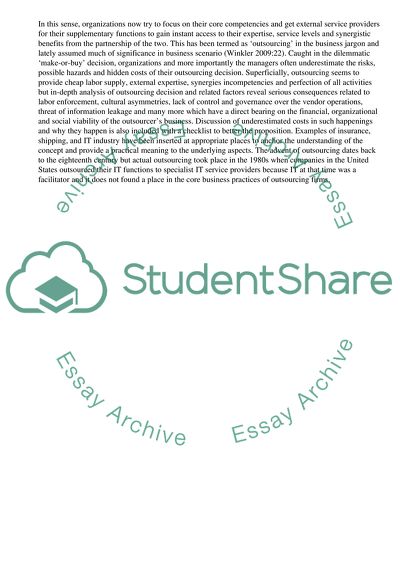Cite this document
(Major Risks and Potential Hazards Encountered in Effective Management Term Paper - 1, n.d.)
Major Risks and Potential Hazards Encountered in Effective Management Term Paper - 1. Retrieved from https://studentshare.org/management/1749124-discuss-the-proposition-that-in-choosing-to-outsource-a-function-managers-commonly-underestimate-the-potential-hazards-and-costs-of-their-decision
Major Risks and Potential Hazards Encountered in Effective Management Term Paper - 1. Retrieved from https://studentshare.org/management/1749124-discuss-the-proposition-that-in-choosing-to-outsource-a-function-managers-commonly-underestimate-the-potential-hazards-and-costs-of-their-decision
(Major Risks and Potential Hazards Encountered in Effective Management Term Paper - 1)
Major Risks and Potential Hazards Encountered in Effective Management Term Paper - 1. https://studentshare.org/management/1749124-discuss-the-proposition-that-in-choosing-to-outsource-a-function-managers-commonly-underestimate-the-potential-hazards-and-costs-of-their-decision.
Major Risks and Potential Hazards Encountered in Effective Management Term Paper - 1. https://studentshare.org/management/1749124-discuss-the-proposition-that-in-choosing-to-outsource-a-function-managers-commonly-underestimate-the-potential-hazards-and-costs-of-their-decision.
“Major Risks and Potential Hazards Encountered in Effective Management Term Paper - 1”, n.d. https://studentshare.org/management/1749124-discuss-the-proposition-that-in-choosing-to-outsource-a-function-managers-commonly-underestimate-the-potential-hazards-and-costs-of-their-decision.


